When you read these 9 spider plant benefits you’ll see why so many consider this plant a top-choice houseplant! While some of these benefits relate to nearly all plants, some are unique benefits to the spider plant. I hope you enjoy the post!
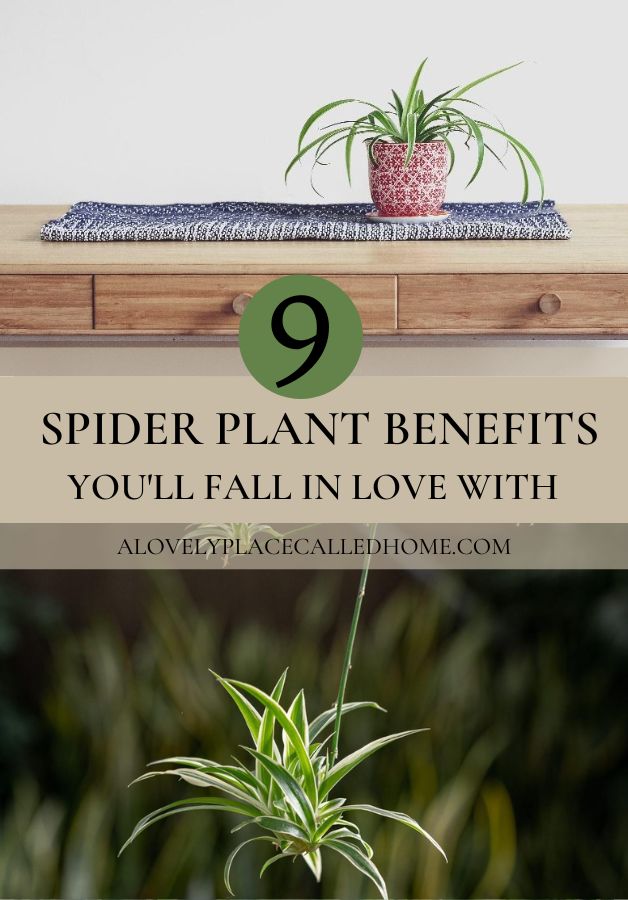
I’m so excited to dive into these spider plant benefits with you today.
Maybe you’re new to the wonderful world of houseplants and you’re wondering, which plants should I start with? Maybe you’re looking for an easy, beautiful, beneficial plant. And maybe you’re a plant-pro, but are curious about what your “babies” are actually doing besides adding beauty to your home.
Either way, look no further! I’ve put together this comprehensive list to give you a clear understanding of the actual benefits of a spider plant.
In researching this post I found that there are some truly incredible, unique spider plant benefits!
Spider plant benefits
1. Positive effect on mood and productivity
One of these time-tested benefits of being in the presence of nature is the positive benefit on our mood and outlook on life.
We know this intuitively. Picture being surrounded by the nature that brings you the most joy. Are you walking through a dense forest path, watching the sun glitter through the bright green leaves? Maybe you’re out on a lake, surrounded by deep, green pines. Are you at the top of a mountain? At the edge of the ocean?

Something about nature just makes us feel alive!
Mountains… forests… What does this have to do with spider plants?
It seems that when we take small pieces of nature (like houseplants) into our homes and care for them, our mood is positively affected in a similar way. Though on a smaller scale.
Studies have pointed to the ability of houseplants to increase concentration and productivity, cause happier moods, decrease depression and anxiety, and even speed recoveries for hospital patients.
From personal experience, having plants around my home does bring me joy. It seems to make our home feel generally more peaceful and cozy.
2. Spider plants are great for beginners
Spider plants are low maintenance. Simply place them in bright, indirect light and water when their soil is mostly dry (about once per week depending on your homes humidity).
A pot with drainage holes will help you avoid overwatering, which can rot the roots.
The challenge with spider plants is that their leaves are skinny and can brown at the tip for various reasons (over-fertilizing or fluoride in tap water, for example). However, even if this happens, the plant can still thrive! You just have to take extra good care of it for a few weeks and maybe tweak a couple things you may be doing wrong.
3. Easy to propagate (with pups!)
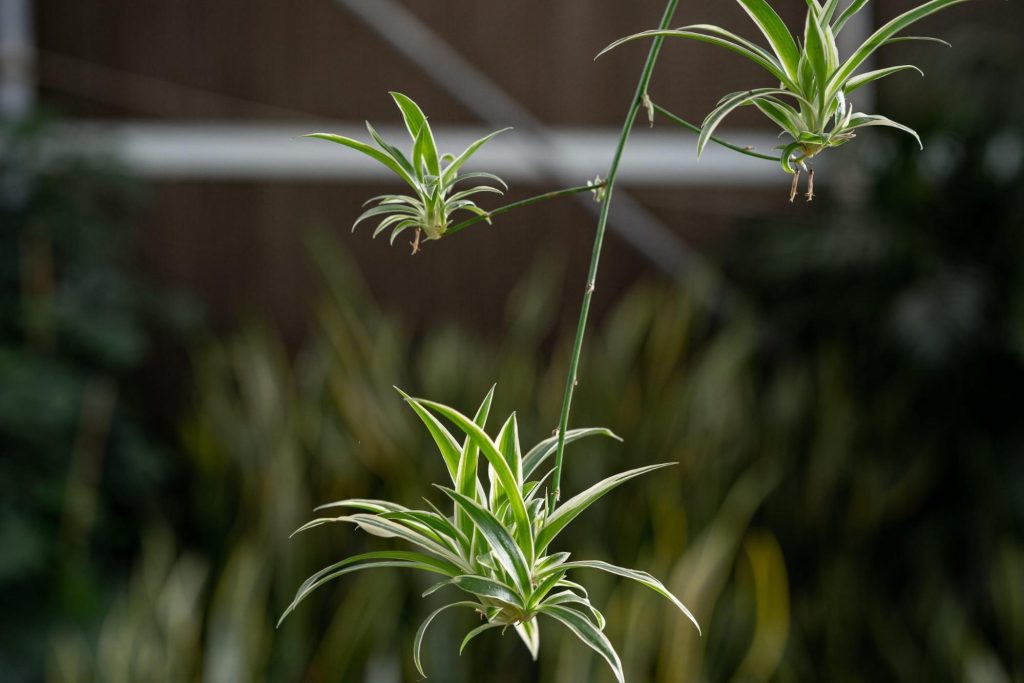
As you can see in this image, spider plants shoot off baby spider plants – called pups or plantlets. Whatever you choose to call them, each and every one can become its own plant!
It is quite easy to snip off a pup, allow its roots to grow in water or soil, and watch it grow into its own new plant! I share detailed instructions in the “How Do I Propagate a Spider Plant?” section below.
You could also choose to leave the pups on the mama plant and let it become a hanging masterpiece! Or you could do a bit of both – leave some, and propagate some.
Lastly, if your mama plant becomes too large for your space, you can easily split it into two or more thriving plants. Simply cut the tubular root ball with a sharp garden knife, and plant each section into its own pot.
4. Non-toxic to kids and pets
Now this is a unique and sought-after benefit. Many houseplants are actually toxic if consumed by humans (like nibbling toddlers) or pets. But not the spider plant!
While it still would not be advised to consume this lovely houseplant, because it could cause nausea or other related symptoms, it isn’t toxic in the same way that other houseplants are.
This makes the spider plant a great option for areas that may be accessible to kids or pets!
5. Increases humidity (for easier breathing)
Another unique spider plant benefit is its ability to humidify indoor spaces.
This study showed that the evapotranspiration (water entering the air from the soil and leaves of the plant) of a spider plant can actually increase the humidity level of an interior room.
The study aimed to see if including spider or jade plants in an indoor working space could help with the negative effects of dry air (breathing issues, dry eyes, skin issues). And they found that the spider plant, much more than the jade, was effective at doing this!
My next question would be: how many spider plants would I need in order to increase humidity by a significant amount?
These researchers said that for a single interior room, you’d need 3 large spider plants (plants in a 10″ pot), or 25 small plants (4″ pots). I think I’ll go with the 3 large, lovely spider plants. Sounds lovely!
6. Spider plants are versatile
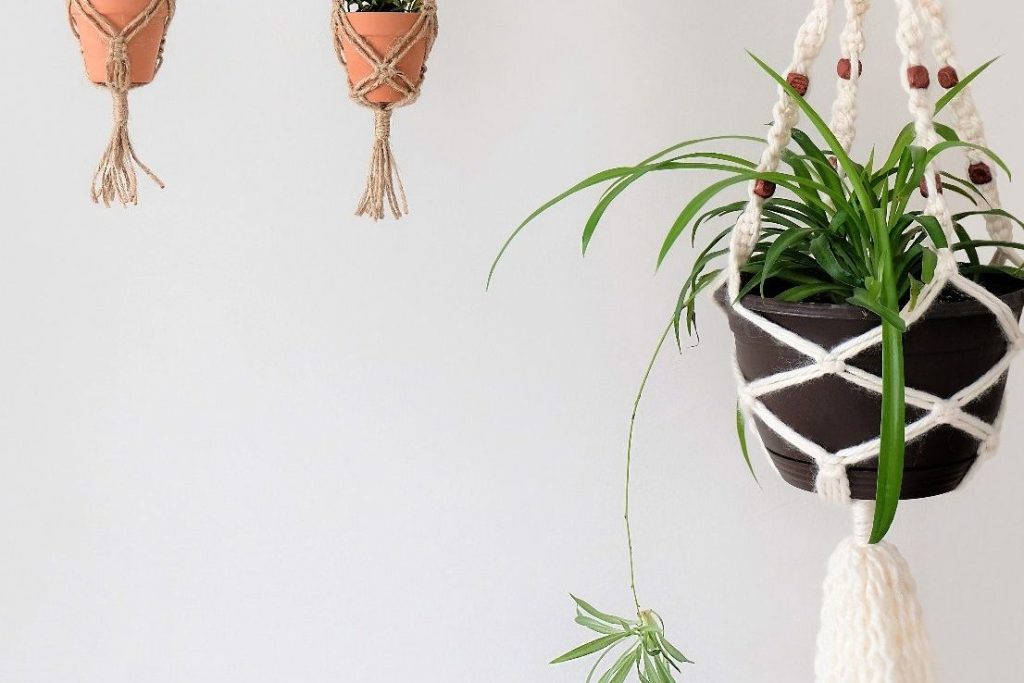
Not all plants are this versatile. The spider plant, however, is visually pleasing in almost any setting: Sitting on a counter, up on the top of a cupboard, on a shelf, or (my favorite choice) hanging from the ceiling.
As your plant grows larger and larger, hanging might be the best option. This will give it room to grow on all sides and to shoot off as many spider plant babies as it desires! (See benefit #3)
The light green, long and skinny leaves of the spider plant allow it to nicely fill out any space with peaceful greenery.
If you want more inspiration for styling your home with plants jump to my friend Dusty’s article! She’s at linenandwildflowers.com/houseplantarticle
7. These plants can survive lower light
While spider plants prefer bright, indirect light, they are resilient enough to tolerate lower lighting locations. My grandma keeps many spider plants throughout her home, and all of them are exposed to different amounts of sunlight. Each and every one is healthy and thriving, even the ones in the basement that never see direct light!
It’s always nice to have a plant for those less-than-perfect spots in our home. Consistent watering will help your spider plant thrive in these locations.
8. Releases oxygen at night
The spider plant performs a unique type of photosynthesis that allows it to convert CO2 (carbon dioxide) to oxygen 24-hours per day. This means that, while most plants typically only do this in the presence of sunlight, the spider plant can release oxygen at night while you sleep.
Better air quality (including lower levels of CO2 and higher levels of oxygen) is proven to help you sleep better at night. In this study, participants who slept with better air quality reported feeling more concentration and alertness the following day.
Including plants that release oxygen at night could be a piece of the puzzle in improving your bedroom air; especially during seasons in which you can’t open your windows much during the day or night.
Another plant that can do this is the snake plant. I have a similar post that highlights all of the snake plants benefits as well if you want to read it!
9. Could clean indoor air
While the jury still seems to be out, more researchers are starting to say that indoor plants may not have as much of an effect on our air quality as we previously thought.
Based on promising studies like NASA’s famous clean air study, it is clearly proven that houseplants DO remove VOCs (volatile organic compounds, like formaldehyde) as well as airborne pollutants (pollen, dust, dander) from the air.
However, it is unclear if houseplants are able to filter the air at a rate that significantly changes indoor air quality.
The difference is that NASA’s study looked at completely enclosed areas. But our homes are not enclosed. Even in the winter, outdoor and indoor air exchange at a very rapid rate. Many researchers now say that houseplants simply can’t keep up with this rate of air exchange.
However, considering all the other amazing benefits of houseplants we’ve discussed here, I now am enjoying the freedom to choose plants because I like how they look and enjoy caring for them… even if they don’t top NASA’s list!
How do I care for a spider plant?
- Place your plant in bright, indirect light
- Use a pot with drainage holes and water when the soil is mostly dry.
- Don’t over fertilize
As discussed before, the spider plant prefers bright, indirect light, but it can tolerate lower light if need be.
This plant likes moisture, so water when the soil is mostly, but not completely, dry. This will likely be once per week, but can vary based on season and location.
Remember not to use tap water unless its from a well and has been tested.
Pretty simple, huh? This is one of the reasons I love this light, happy little plant.
How do I propagate a spider plant?
Method 1: propagate a spider plant baby (pup)
- Choose a medium to large spider plant pup.
- Choose a pup that has a white/yellow nub at the base for best results.
- Cut the pup off the shoot.
- Plant in a small pot with potting soil and care for as usual. OR place the plant with its base touching a damp paper towel or water, and wait for roots to grow a few inches long before potting.
Point 3 could use some more explaining:
You can press the base of the spider plant pup directly into moist potting soil, packing it in enough so that it is secure. With bright, indirect light and consistent watering, this plant will likely grow roots and thrive.
However, water propagation (allowing roots to grow in water before potting into soil) seems to be more effective for many plant enthusiasts. It also allows you to monitor root growth. There are two methods for doing this:
- Place on a damp paper towel: This is a popular method to allow roots to grow on your spider plant baby. You’ll need to keep the paper towel damp by spraying it with a spray bottle before it dries out. I prefer the next method for this reason.
- Place base of plant in water: I find this to be the all-time easiest and most effective way to propagate plants of all sorts. With the spider plant, you take the baby and place the root-producing base into water. You can change out the water once per week, but I’ve had success without this.
Once your roots are a few inches long (or longer! There’s no rush), plant your spider plant into potting soil and care for as usual.
Method 2: divide a large spider plant
You can also divide a large spider into two or more plants. You’ll know it’s time for this if your plant has been previously thriving, but now is large and struggling. Dividing the plant will give it fresh room to grow and should perk it back up!
Here is how you can divide your spider plant:
- Carefully remove the plant from the soil.
- Brush or rinse the tubular root ball to decide how many plants to make (usually two is sufficient).
- Use a sharp garden knife (or kitchen knife… guilty) to cut the roots in two, creating two plants.
- Plant each portion in its own appropriately sized pot with drainage holes.
- Place in bright, indirect light and water when the soil is mostly dry.
There you have it! Your home, office, and all your friends’ houses will be overflowing with amazing, beneficial spider plants in no time!
Another post you might like;
20 BEAUTIFUL LOW LIGHT HANGING PLANTS TO TRY THIS WINTER
Low light hanging plants are a great option if you’re living in a tiny space. They purify the air and provide oxygen which is great during the darker months when people are inside more often. Check out this list of 20 beautiful plants that are well-suited for hanging and can tolerate low light.
Don’t forget to check out my friend Dusty’s post!
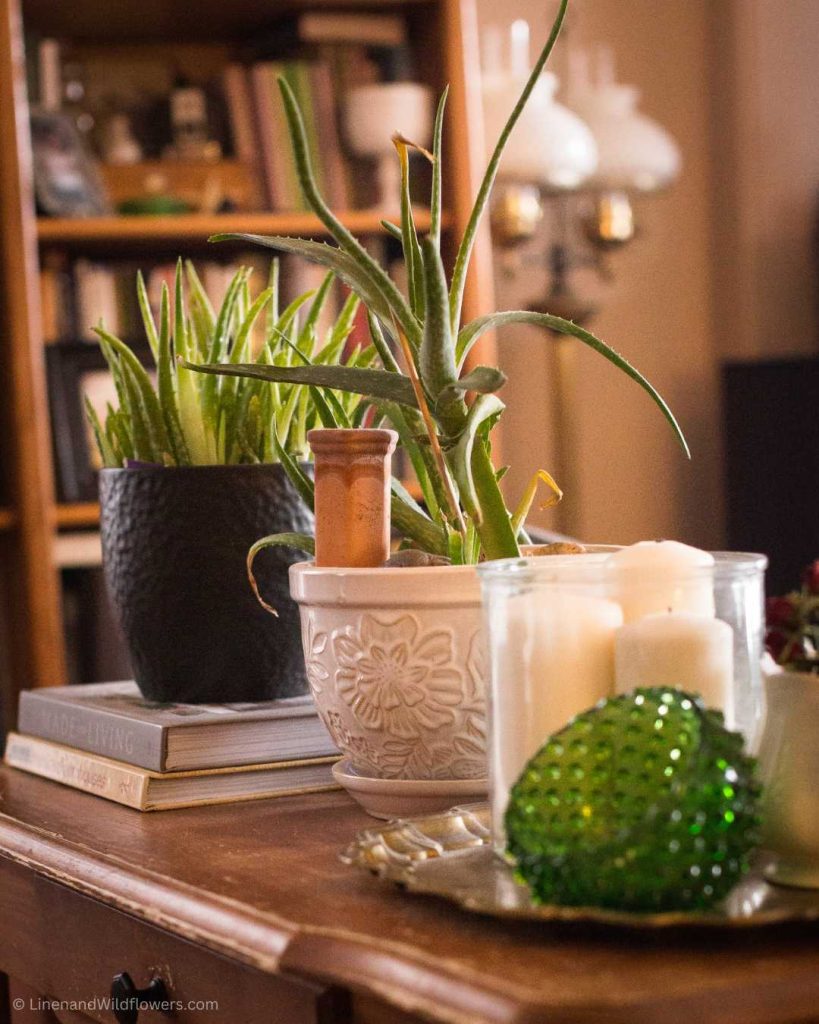
HOW TO STYLE YOUR HOME WITH PLANTS
When decorating with house plants, it’s essential to know their needs, such as the amount of light and water needed for your plants to thrive. How do you know which plant to choose and where to put them? How to style your home with plants will add personality and bring life and character to the space.
9 SPIDER PLANT BENEFITS YOU’LL FALL IN LOVE WITH
Shoutout to my friend Amelia for her contributions and insight within this post! Thanks girl!
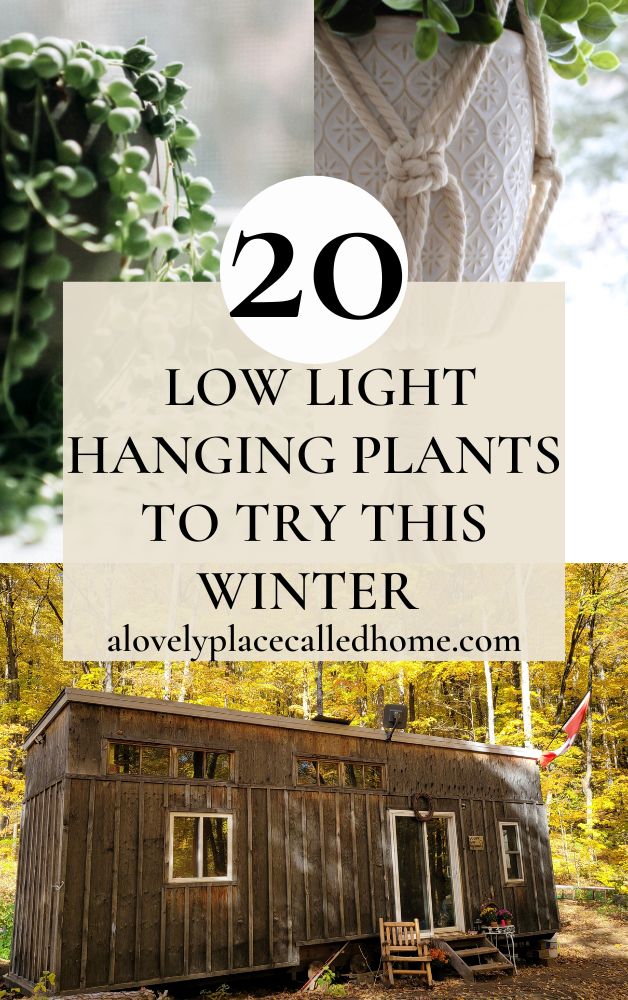
Great article, totally what I wanted to find.
Im glad you found what you needed! That makes me so happy!